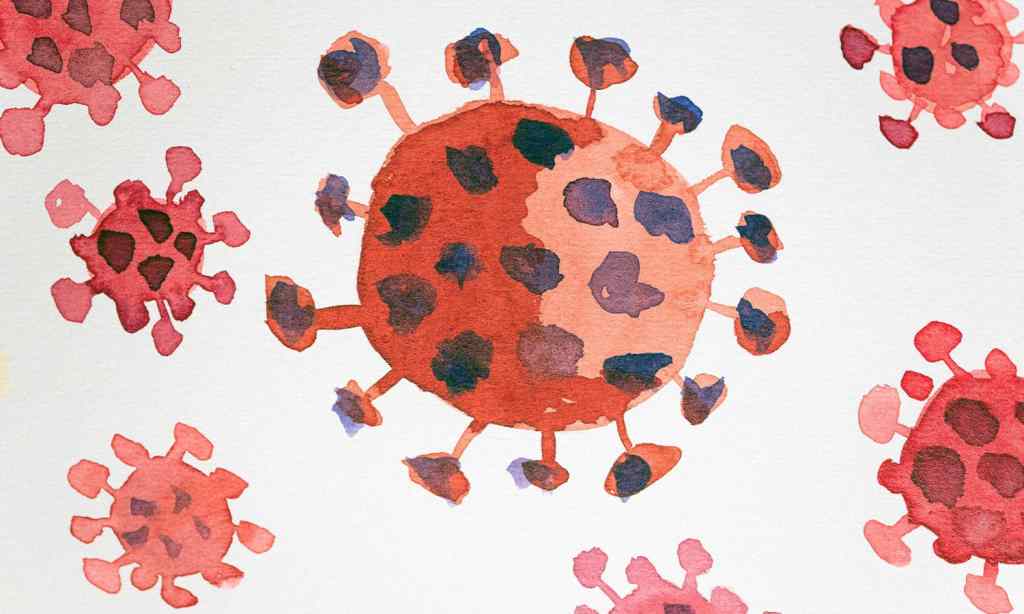It was bound to happen. Scientists and government officials are concerned about the spread of a new variant that has been described as more transmissible and more deadly than Omicron.
The new variant, dubbed BA.2, is an offshoot of the same lineage that Omicron, known otherwise as BA.1, emerged from. It’s thought to be behind the surge in case numbers seen in Denmark, Hong Kong, the UK, and India since January and the recent rise in New South Wales in the past week.
NSW Health Minister Brad Hazzard announced yesterday that the BA.2 sub-variant was becoming the dominant variant in the state. Preliminary data suggests that cases could “more than double” within six weeks.
Currently, NSW is sitting on 14,000 cases, up from 8,400 a week ago, and 7,300 from two weeks ago when mask restrictions were dropped. This is the highest we’ve seen cases since 27 January.
BA.2 has been termed “stealth Omicron” because it is difficult to distinguish from Omicron on a standard RAT or PCR test. It’s been circulating in Australia since January, as we’ve written about before, but is now starting to become a real concern.
“People need to understand that while the community has gone to sleep on the virus, the virus hasn’t gone to sleep on the community,” Hazzard said.
The University of NSW’s Associate Professor James Wood told the ABC that daily cases could soon reach the 20,000 to 30,000 range, which would mean more hospital presentations.
“The proportion of (cases) that is BA.2 has started to grow rapidly and is probably the dominant variant already,” he said.
“We think by the end of the month it will be greater than 90 per cent of the cases.”
How Bad is BA.2?
In January, when the virus sub-variant was first identified in Australia, scientists were still examining BA.2 and trying to work out its likely potency.
Recent data suggests that the variant could be more dangerous than first thought. A study from the University of Tokyo, which compared Omicron BA.1 and BA.2, concluded that BA.2 is so different in its genetic makeup that it should be classified as a new variant. They also suggested that it is the most dangerous yet to emerge in the COVID-19 pandemic.
Professor Wood has said that the new variant is probably around 25% more transmissible than the already highly-transmissible Omicron variant. Other estimates have put this number at 40% however.
The data is not clear that the new variant is more deadly. This is based on the fact that countries that have seen spikes in case numbers don’t have comparably high death numbers. This could change, however, particularly amongst populations where vaccination rates are low. Further variations in the virus, including a newly identified BA. 2. variation seen in Hong Kong, could be even more difficult to manage.
‼️ 85% of sequences in Hong Kong found to be BA.2 with I1221T mutation
– cases increased 205x in the last month
– deaths have gone from 0 to 134 per day average in 3 weeksI know we’re busy taking a Covid victory lap and patting ourselves on the back, but this seems bad. https://t.co/yhpdE9CeXi
— Joe Friday (@justthefacts85) March 5, 2022
The World Health Organisation’s most recent update on BA.2 however says that the sub-variant should be classified under Omicron and that it should continue to be considered a variant of concern.
WHO’s Technical Advisory Group on SARS-CoV-2 Virus Evolution said in a statement that “Studies have shown that BA.2 has a growth advantage over BA.1.”
While studies are still ongoing, “initial data suggest that BA.2 appears inherently more transmissible than BA.1”
However, “This difference in transmissibility appears to be much smaller than, for example, the difference between BA.1 and Delta”
In response to the Japanese data, which is based on animal models with no immunity, the WHO has said that vaccinations appear to be mitigating the risk of serious infection.
“Real-world data on clinical severity from South Africa, the United Kingdom, and Denmark, where immunity from vaccination or natural infection is high, there was no reported difference in severity between BA.2 and BA.1”.
Other information however around the long-term effects of COVID and its apparent effect on the brain suggests that we should be more cautious than we are being currently, as even mild COVID infection has been reported to cause cognitive decline similar to a decade of aging.
What Are We Doing About BA.2?
The state and federal government’s current position is to drive booster numbers, which appear to have plateaued over the past few months as COVID is no longer top-of-mind.
Marianne Gale, NSW’s deputy chief health officer, has said that an increase in socialising, major events, and a reduction in mask-wearing is driving the spike in COVID numbers.
“The preliminary and early projections from the team at UNSW … do show that we are likely to see an increase in case numbers through March, to April and May,” she said.
“We don’t know exactly how high the peak may be, how long it may last, (or) exactly when it will come.”
NSW Premier Dominic Perrotett told Sunrise that he is prepared to “tailor our settings” based on the evidence and the case numbers. However, he continued to champion boosters as the best line of defence against the virus.
Australia is undoubtedly tired of COVID and the idea of a return to lockdowns and heavy restrictions just as things are getting back to normal is not one that many of us want to consider. However, as Perrottet said, this virus is not going away.
Read more stories from The Latch and subscribe to our email newsletter.







